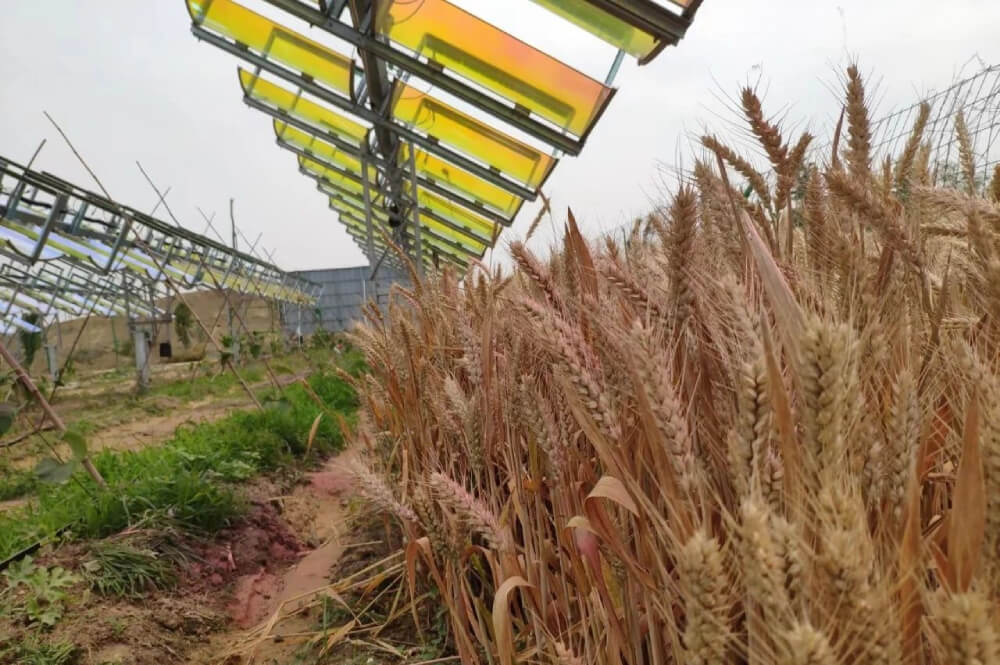Agricultural photovoltaic system reaches 9.9% efficiency, LCOE cost of $0.033/kWh
 namkoo solar
namkoo solar
Chinese researchers have built a prototype spectrally split collector agricultural photovoltaic (SCAPV) system. The system has a photovoltaic conversion efficiency of 9.9%, a mixed light utilisation efficiency (MLUE) of 9.05% and a levelised cost of energy (LCOE) of USD 0.033/kWh.

A team of scientists led by the University of Science and Technology of China (USTC) has developed a Spectrally Split Collector Agricultural Photovoltaic (SCAPV) system and claims that this system can improve crop productivity for a wide range of plants.
This SCAPV system works on the principle of solar spectrum splitting based on the different spectral responses of PV and photosynthesis. According to this principle, red and blue light will be used for photosynthesis because their wavelengths match the absorption peaks of plant chlorophyll, while all other wavelengths are used for centralised photovoltaic power generation.
The team presented their findings in the article "Spectrally Split Collector Agricultural Photovoltaic Technology Improves Hybrid Solar Conversion Efficiency," which was recently published in the journal Energy Conversion and Management. They emphasise that the
The system consists of three key components, namely a multilayer polymer film (MPF) for spectral splitting, a parabolic trough collector (PTC) and a crystalline silicon solar cell.
They used commercially available MPF with high transmittance produced by US industrial conglomerate 3M, while the PTC acts as a substrate for the flexible MPF and as a reflector to direct the reflective bands towards the focal cross-finger back-contact (IBC) photovoltaic cell supplied by US solar cell manufacturer Sunpower.
The researchers further explained, "Despite the higher efficiency potential of Group III-V multi-junction solar cells, crystalline silicon cells are more cost-competitive for scalable solutions and also maintain high performance under high intensity incident radiation with a concentration ratio of 3-100." They also noted that each PV module consists of three parts - a low-iron glass front cover, an ethylene vinyl acetate copolymer backsheet and a backside aluminium substrate.
The cost of the PV cell and MPF is $0.10/watt and $0.02/watt, respectively, while the cost of the hardware, including the collector and tracker, amounts to $0.57/watt, the researchers said.
The research team deployed a prototype SCAPV system in Fuyang City, Anhui Province, China, in order to test the system performance. The facility occupies 422.4 square metres and features a dual-axis solar tracking system.
The SCAPV system achieved a photovoltaic conversion efficiency of 9.9 per cent and a mixed light utilisation efficiency of 9.05 per cent. This exceeds the maximum theoretical photosynthetic efficiency of around 6 per cent, the researchers said.
"The economic analysis showed that the levelised cost of energy for the SCAPV system was $0.033/kWh, indicating economic viability." They also added that plants grown in partial sunlight have higher biomass. "Although these types of tunable PV systems are still not cost-competitive at this time, they are expected to be commercialised and continuously improved as they can offer advantages over conventional silicon solar cells in the niche market of agricultural PV."
In October this year, the research team unveiled the basic design of the SCAPV system. They tested the system outdoors in Anhui province and found that it produced 107 MWh of electricity per hectare. the overall efficiency of the system was up to 11.6 per cent, which the scientists say is the highest efficiency ever recorded using spectral separation technology.



































